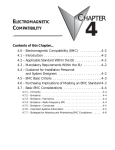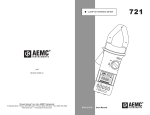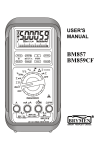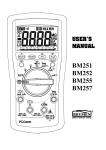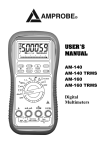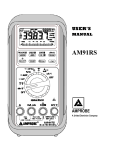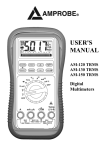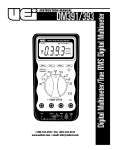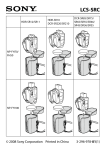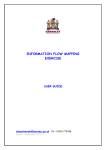Download Stellar SR55 Soft Starter User Manual SR55-M
Transcript
Electromagnetic Compatibility Appendix C Appendix C – Electromagnetic Compatibility C.0 – Electromagnetic Compatibility (EMC)�����������������������������������������������������������C–2 C.1 – Introduction�����������������������������������������������������������������������������������������������������C–2 C.2 – Applicable Standard Within the EU ��������������������������������������������������������������C–2 C.3 – Mandatory Requirements Within the EU �����������������������������������������������������C–2 C.4 – Guidance for Installation Personnel and System Designers�����������������������C–2 C.5 – EMC Basic Criteria�����������������������������������������������������������������������������������������C–3 C.6 – Purchasing Implications of Meeting an EMC Standard������������������������������C–3 C.7 – Basic EMC Considerations�����������������������������������������������������������������������������C–4 C.7.1 – Immunity �����������������������������������������������������������������������������������������������������������C–4 C.7.2 – Emissions ���������������������������������������������������������������������������������������������������������C–4 C.7.3 – Emissions - Harmonics ������������������������������������������������������������������������������������C–4 C.7.4 – Emissions - Radio Frequency (RF) ������������������������������������������������������������������C–4 C.7.5 – Emissions - Conducted ������������������������������������������������������������������������������������C–5 C.7.6 – Important Systems Information�����������������������������������������������������������������������C–5 C.7.7 – Strategies for Attaining and Maintaining EMC Compliance��������������������������C–6 Stellar® SR55 Series Soft Starter User Manual – 1st Ed. Rev.A – 08/17/2015 Page C–1 Appendix C: Electromagnetic Compatibility C.0 – Electromagnetic Compatibility (EMC) As supplied, all SR55 Soft Starters meet the standards of emission and immunity levels defined in the IEC 60947-4-2 and EN 60947-4-2 product standards for AC Semiconductor Motor Controllers and Starters. However, the EMC performance of the controller can be significantly affected by the manner in which it is incorporated into the system in which it is intended to operate. To prevent inadvertent degradation of EMC performance, attention must be given to motor cable lengths, wiring configurations, the nature of the power supply, etc., at the design, construction and implementation stages of a project. C.1 – Introduction It is widely accepted that electromagnetic compatibility between electronic and electrical products is a desirable objective. Technical standards are increasingly stipulating levels of EMC performance which compliant products are required to meet. The decision by the European Union (EU) to implement a community-wide directive covering EMC caused considerable activity among electrical and electronic equipment manufacturers and suppliers to identify, understand, and mitigate the sources of electromagnetic interference within their products and systems. C.2 – Applicable Standard Within the EU The product standard which defines EMC performance for soft starters is IEC 60947-4-2 ‘AC Semiconductor Motor Controllers and Starters.’ (The Official Journal of the EC will list this standard as EN 60947-4-2.) The SR55 has been type tested in accordance with the test procedures and levels laid down in the product standard. C.3 – Mandatory Requirements Within the EU (Applicable to any person involved in the installation and operation of the equipment.) The EU Directive 2004/108/EC, describes the required EMC performance of all electrical equipment which is to be connected to a low voltage supply network. It imposes an obligation on the manufacturer of the soft starter to provide sufficient information for installers, system integrators, users, and anyone else connected with the installation and operation of the equipment. This section provides the technical information to support the obligation of the manufacturer. The provision and maintenance of compatibility extends from the manufacturer to the panel builder, assembler, systems integrator, and ultimately to the installer and user. Anyone involved in the installation and operation of the equipment, through a lack of knowledge, misdirection, or for other reasons, can completely negate the initial EMC performance of the equipment. C.4 – Guidance for Installation Personnel and System Designers For safety reasons, all SR55 products are intended to be installed and set to work by skilled personnel who are capable of interpreting and following EMC guidelines correctly. Any person not fully trained in the appropriate technology should not attempt the installation. If you do not understand, or if you are unclear about any part of these guidelines, then please consult your supplier. Often, consultation with the supplier can avoid unnecessary problems in specifying and installing the correct combination of equipment. Page C–2 Stellar® SR55 Series Soft Starter User Manual – 1st Ed. Rev.A – 08/17/2015 Appendix C: Electromagnetic Compatibility C.5 – EMC Basic Criteria The electromagnetic compatibility of a product is defined by two criteria: 1) Immunity to electromagnetic disturbances generated externally to the product. 2) The type and amount of conducted and radiated electromagnetic emissions emanating from the product. Ascertaining the nature of the power supply is of primary consideration when deciding on appropriate EMC requirements. The requirements for equipment installed in heavy industrial environments (fed from their own isolated low voltage power supply) differ from those installed in residential, commercial, light industrial, and health-care applications (directly connected to a public low-voltage network). Generally, industrial installations require higher immunity levels and permit higher levels of conducted and radiated emissions than those for non-industrial installations. On the other hand, lower levels of emissions output, and lower immunity levels, are specified for installations connected directly to the public low-voltage network. C.6 – Purchasing Implications of Meeting an EMC Standard Before purchasing components for the installation, the specifier must evaluate the expected source of power for the Soft Starter and understand exactly the implications for meeting EMC requirements. It is likely that failure to do so will result in the purchase and installation of inappropriate equipment. IMPORTANT: The information and guidance given in section C.7 forms part of the statutory requirements of the European Union Directive 2004/108/EC on EMC. Stellar® SR55 Series Soft Starter User Manual – 1st Ed. Rev.A – 08/17/2015 Page C–3 Appendix C: Electromagnetic Compatibility C.7 – Basic EMC Considerations C.7.1 – Immunity The product standard for immunity requirements is EN 60947-4-2:2012. All SR55 Soft Starter products meet, or exceed the industrial level immunity requirements laid down in this standard. C.7.2 – Emissions Emissions are classified as low frequency (below 9kHz), known as harmonics, and high or radio frequency (above 9kHz). Both radio-frequency emissions and low-frequency harmonics are generated by the action of the SR55 Soft-Starter. NOTICE: This product has been designed for environment A. Use of this product in environment B may cause unwanted electromagnetic disturbances in which case the user may be required to take adequate mitigating measures. C.7.3 – Emissions - Harmonics During normal operation, soft starters turn their semiconductor switches on and off in order to vary the voltage at the motor terminals, and this introduces supply discontinuities and generates harmonics. However, the mode of pulsing used by SR55 Soft Starters minimizes these harmonic effects, since SR55 power circuits are configured as a fully-controlled regulators (W3C). Only non-triplen (integer multiples of the third harmonic), odd harmonic frequencies are created, starting with and diminishing rapidly from the fifth harmonic, and virtually disappearing by the nineteenth harmonic. C.7.4 – Emissions - Radio Frequency (RF) Radio frequency emissions are propagated in two ways: 1) Conduction along the leads supplying the soft starter. 2) Radiation from the operating equipment. They also have two sources: 1) The high-frequency currents associated with the control electronics (this includes the microprocessor). 2) The action of the semiconductor devices forming the power switching elements located in the controller main circuits. The radiation measurements made from operating versions of SR55 Soft Starters show levels lower than the allowed limits. Further, enclosures of metallic construction provide additional shielding for SR55 Soft Starters mounted within them. The only radiated interference effect that might arise from a soft starter would be if mobile telephones, walkie-talkies, etc. were to be used in very close proximity to a unit which was operating with the enclosure door open. For this reason, any enclosure must display a label that brings the possibility of electromagnetic interference to the attention of the operator under these circumstances. Page C–4 Stellar® SR55 Series Soft Starter User Manual – 1st Ed. Rev.A – 08/17/2015 Appendix C: Electromagnetic Compatibility C.7.5 – Emissions - Conducted Conducted emissions are able to travel great distances and may cause interference to any neighboring consumers connected to the common low-voltage supply network. Allowable levels for conducted emissions generated by semiconductor motor controllers and starters are influenced by the nature of the low-voltage power distribution network. The determining factor is whether the source of power is, either: a) a private supply with a single consumer whose Point of Common Coupling (PCC) is at a high or medium voltage transformer, or b) a public low-voltage network with more than one consumer, where the individual PCC is made directly to the network itself. The first type of supply (a) is identified as “Industrial”, and requires the use of soft starters compliant with EN 60947-4-2 Table 19 Environment A Emission Levels. The second type of supply (b) is identified as “Residential” and requires the use of Class B equipment. Class B equipment is equipment suitable for use in domestic establishments and in establishments directly connected to a low-voltage power supply network which supplies buildings for domestic purposes. C.7.6 – Important Systems Information The specification limits for both equipment classes assume systems are grounded at the star (wye) point of the supply transformer through low impedance connections. Certain industries, particularly continuous process industries, employ distribution systems that operate either with a ground connection through a high impedance or without a ground at all. These systems may cause severe problems of operator safety when installed with capacitive high frequency filters. Such systems are not considered in this document. In the case of an isolated or high impedance grounded system, seek advice from your supplier before fitting a capacitive high frequency filter to an SR55 Soft Starter. It is essential that the specifying authority, user, or installer has a clear knowledge of the type of network to which the product is to be installed before making decisions as to which EMC strategy to adopt. As supplied, all SR55 products comply with the conducted emissions requirements for environment class A as defined by EN 60947-4-2:2012 Table 19. However, the length and type of cable connecting the motor to the starter module materially affects the level of emissions generated, and can amplify them greatly. The standard also allows different levels of emissions depending on rated input power, which also affects the need to fit filters. The EN 60947-4-2:2012 standard only requires consideration of steady-state conditions for EMC emission purposes, and expressly excludes varying conditions such as those during ramp-up and ramp-down. Finally, statistics show that the number of disturbances arising from soft starters, operating in a very wide variety of applications and networks throughout the world, is insignificant. Where EMC disturbances occur, it is very unlikely that they can be genuinely attributed to a soft starter. Stellar® SR55 Series Soft Starter User Manual – 1st Ed. Rev.A – 08/17/2015 Page C–5 Appendix C: Electromagnetic Compatibility C.7.7 – Strategies for Attaining and Maintaining EMC Compliance Where possible, minimize the effect of electrical interference by using the strategies listed below. • Locate the SR55 Soft Starter unit as close as reasonably possible to the motor terminal box in order to minimize cable length. • Ensure that, within any enclosure, the control wiring does not run parallel to the power wiring. Where this is unavoidable, maintain a 100 mm [3.9 in] separation between control cables and power cables. • Where possible, ensure that the control wiring crosses at right angles to the power wiring. This practice reduces the cross-coupling between cables. • Shield any cables carrying sensitive signals. The digital control inputs to a SR55 are opto-isolated, and do not normally require buffering (e.g. through a small relay) or shielding. Where a special purpose system filter has been applied at the point of common coupling, additional filtering of individual drives is not necessary and may introduce undesirable effects due to resonance. For the purposes of EMC, the connections between the SR55 controller and motor are considered to be an extension of the enclosure, and preferably should be contained within grounded metallic trunking or conduit. Armored cable may be used providing it is correctly terminated, although the EMC performance will be slightly inferior. Shielded cable is not necessary. All associated electrical and electronic equipment near to the controller complies with the emission and immunity requirements of the EMC Directive. Page C–6 Stellar® SR55 Series Soft Starter User Manual – 1st Ed. Rev.A – 08/17/2015






